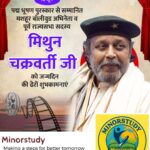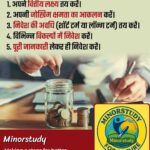🌈 Introduction: Gyanmarg – The Enlightening Path of Knowledge
Gyanmarg: In Sanatan Dharma (eternal Dharma), there are four main yogic paths—Karma, Bhakti, Raja, and Gyanmarg (Jñāna Yoga). Among these, Gyanmarg, the Path of Knowledge, is revered as the route to moksha (liberation) by realizing the unity of the Atman (individual soul) and Brahman (Supreme Being). This profound journey isn’t for the impatient—it’s for seekers devoted to deep reflection, self-inquiry, and transformative insight.
- 🌈 Introduction: Gyanmarg – The Enlightening Path of Knowledge
- 🕰️ Historical Roots & Timeline of Gyanmarg
- 🔍 What Is Gyanmarg? Definition & Practice
- 🔎 Key Facts & Significance
- ✨ Why Gyanmarg Matters Today
- 1. Intellectual Liberation
- 2. Breaking Illusion (Māyā)
- 3. Balanced Spirituality
- 4. Societal Clarity
- 5. Universal Relevance
- 🙋♂️ FAQs: Unwrapping Common Queries
- 🗓️ Ideal Observance & Integration in Daily Life
- 💫 Significance – Personal & Social
- 🙏 Wishing Thoughts for Gyanmarg Seekers
- 📌 Important Points to Remember
- 🧠 Conclusion: Gyanmarg – Eternal Illumination Through Knowledge
- 🌍 Daily Life & Societal Impact
- 🎯 Final Thought
🕰️ Historical Roots & Timeline of Gyanmarg
Vedic Era (1500–500 BCE): Knowledge traditions were already evolving in Vedic “kandas”, as early forms of spiritual method en.wikipedia.org+5en.wikipedia.org+5hub.edubirdie.com+5.
Upanishadic Period (~800–200 BCE): Core wisdom surfaced—e.g., “Tat Tvam Asi” (“Thou art That”), central to realizing Atman–Brahman.
Bhagavad Gita (~200 BCE): Krishna explains Jnana Yoga in chapters 4, 7 & 16—path marked by meditation, discrimination, and wisdom en.wikipedia.org.
Classical Era (~500 CE): Adi Shankara codified non-duality and Jñāna Yoga practices (śravaṇa, manana, nididhyāsana) en.wikipedia.org.
Modern Era: Vivekananda and Sivananda popularized the fourfold path schema, emphasizing Jñāna as supreme for intellectually inclined seekers .
🔍 What Is Gyanmarg? Definition & Practice
Jñāna means “true knowledge”—not academic, but experiential understanding of one’s true Self.
Core Practices:
Śravaṇa: Listening to scripture—Upanishads, Gita, Vedanta teachings—with a qualified guru.
Manana: Reflective thinking on these teachings—questioning self, ego, reality.
Nididhyāsana: Deep meditation to internalize the truth—realizing Atman is Brahman. en.wikipedia.org
🔎 Key Facts & Significance
One of three classical yogas (with Karma & Bhakti); later expanded to four by adding Raja Yoga. en.wikipedia.org
Most revered for monists (e.g., Advaita Vedanta); Shankara championed pure knowledge for liberation.
Gyanmarg is considered difficult, slow, intricate—requires mental maturity and stability. en.wikipedia.org
Roots in Upanishads, systematized in Yoga Sutras of Patanjali, with Vivekananda reinforcing its place among the four great yogas. en.wikipedia.org+1en.wikipedia.org+1
✨ Why Gyanmarg Matters Today
1. Intellectual Liberation
For seekers who question, reflect, and analyze life’s mysteries, it’s a mental sanctuary.
2. Breaking Illusion (Māyā)
Guides us to detach from material obsession and ego-driven illusions.
3. Balanced Spirituality
Balances devotional and active work paths—ideal for modern aspirants embracing integrated growth.
4. Societal Clarity
Encourages ethical responsibility and compassion rooted in wisdom, not blind faith.
5. Universal Relevance
Jñāna’s focus on unity is not limited by religion—it resonates with universal human inquiry.
🙋♂️ FAQs: Unwrapping Common Queries
Q1: What differentiates Gyanmarg from Karma or Bhakti Yoga?
Karma = selfless action
Bhakti = devotion and love
Gyanmarg = realization through knowledge of Atman-Brahman axis medium.com
Q2: Is it okay to follow multiple yogas?
Absolutely! Many practical paths combine karma, bhakti, and jnana—holistic progress encouraged.
Q3: Who is Gyanmarg suited for?
Introspective, philosophical minds craving truth; best guided by a realized guru.
Q4: What results from practicing Jñāna Yoga?
Inner peace, detachment from ego, compassion, and inner freedom—moving toward moksha.
Q5: How long until one sees change?
No fixed timeline—it’s a lifelong evolutionary process requiring steady practice.
🗓️ Ideal Observance & Integration in Daily Life
Integrate daily rituals of study (śravaṇa), reflection (manana) and stillness (nididhyāsana).
Pair knowledge with ethical living, community service, and devotion.
Ideal support through spiritual circles, retreats, Upanishad study, guided meditation.
💫 Significance – Personal & Social
| Level | Impact |
|---|---|
| Personal | Inner clarity, emotional balance, freedom from fear and attachment |
| Social | Ethical conduct, compassionate leadership, wisdom-driven decisions |
| Spiritual | Awakens deeper existential insights; aligns with India’s quest for moksha |
🙏 Wishing Thoughts for Gyanmarg Seekers
“May your mind burn like a lamp in stillness, illuminating true wisdom. May your reflections clear illusions and reveal unity within.”
Ideal gift for Gurupūjā, Yāgyās, or spiritual milestones—encourages noble pursuit.
📌 Important Points to Remember
Gyanmarg aims for self-knowledge, not just scripture memorization.
Seen as deepest yet toughest jñāna‑through-insight path.
Requires guidance—guru is critical.
Not isolated from other yogas—holistic approaches can blend inspiration, action, love, and knowledge.
Key qualities: viveka (discernment), vairāgya (detachment), ṣaṭka‑sampatti, and mumukṣutva (yearning). en.wikipedia.org
🧠 Conclusion: Gyanmarg – Eternal Illumination Through Knowledge
Gyanmarg is more than theological theory—it’s a map to inner freedom. Embodied courage, discipline, and deep humility, it invites one to remember who they truly are.
In today’s fast-paced, fragmented world, this yogic stream offers clarity, depth, and profound human connection—against the violence of distraction and illusion. For seekers, Gyanmarg is not just a path—it’s lifelong illumination.
🌍 Daily Life & Societal Impact
Encourages reflective decision-making in personal and public life.
Empowers individuals as compassionate, wise citizens.
Promotes inclusive harmony, recognizing unity beyond differences.
🎯 Final Thought
“Knowledge not for prestige—wisdom that sets you free. Gyanmarg shows that the finest journey begins within.”








